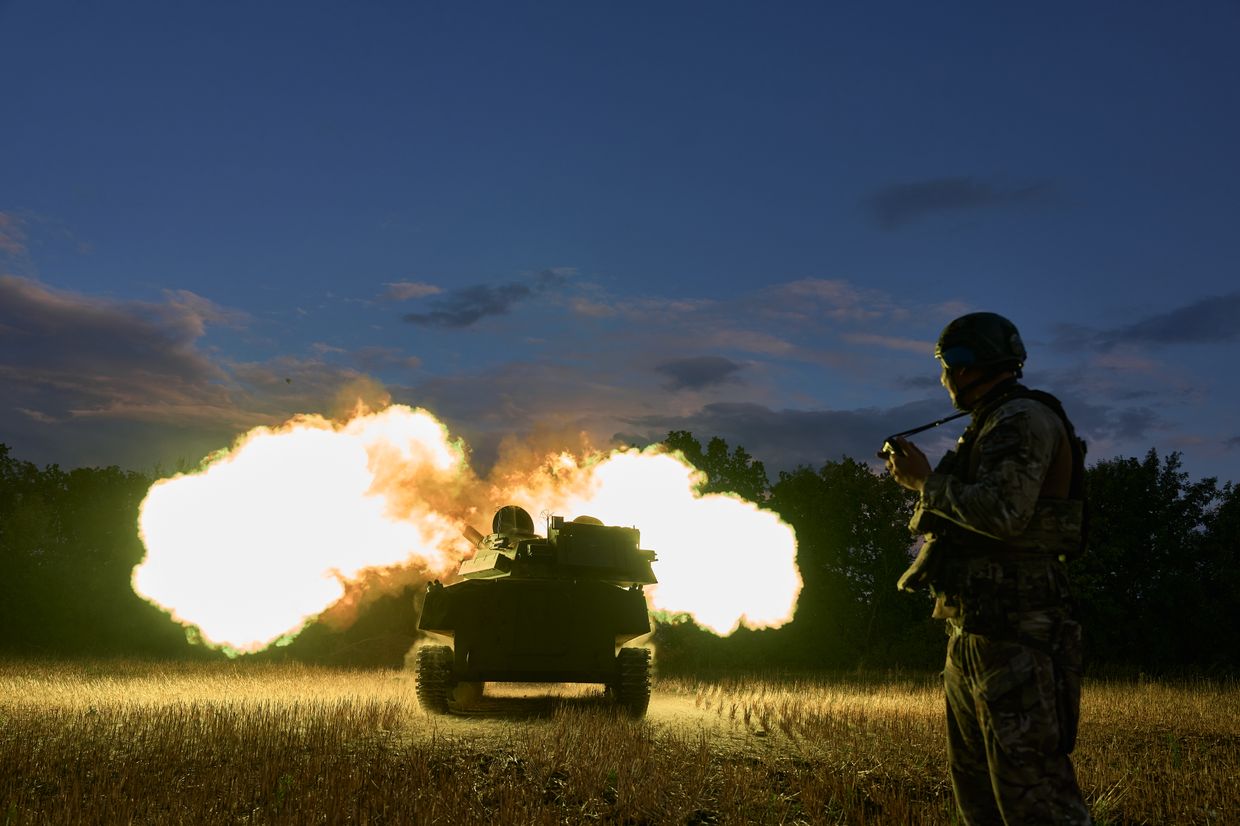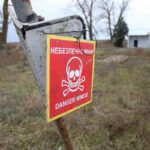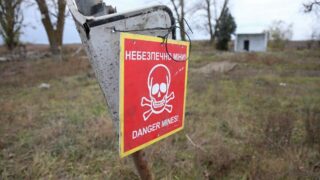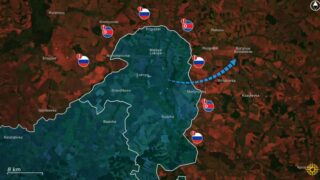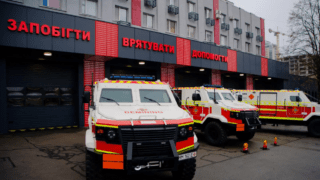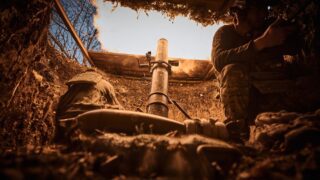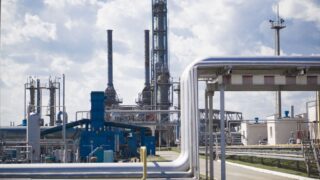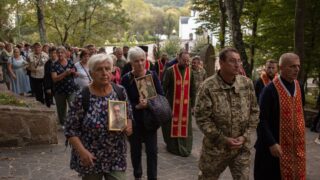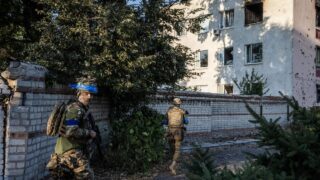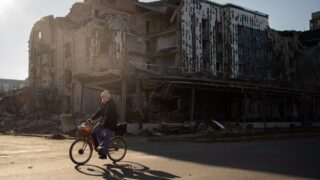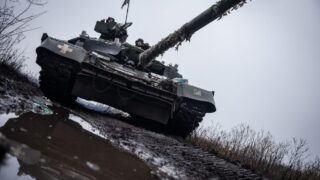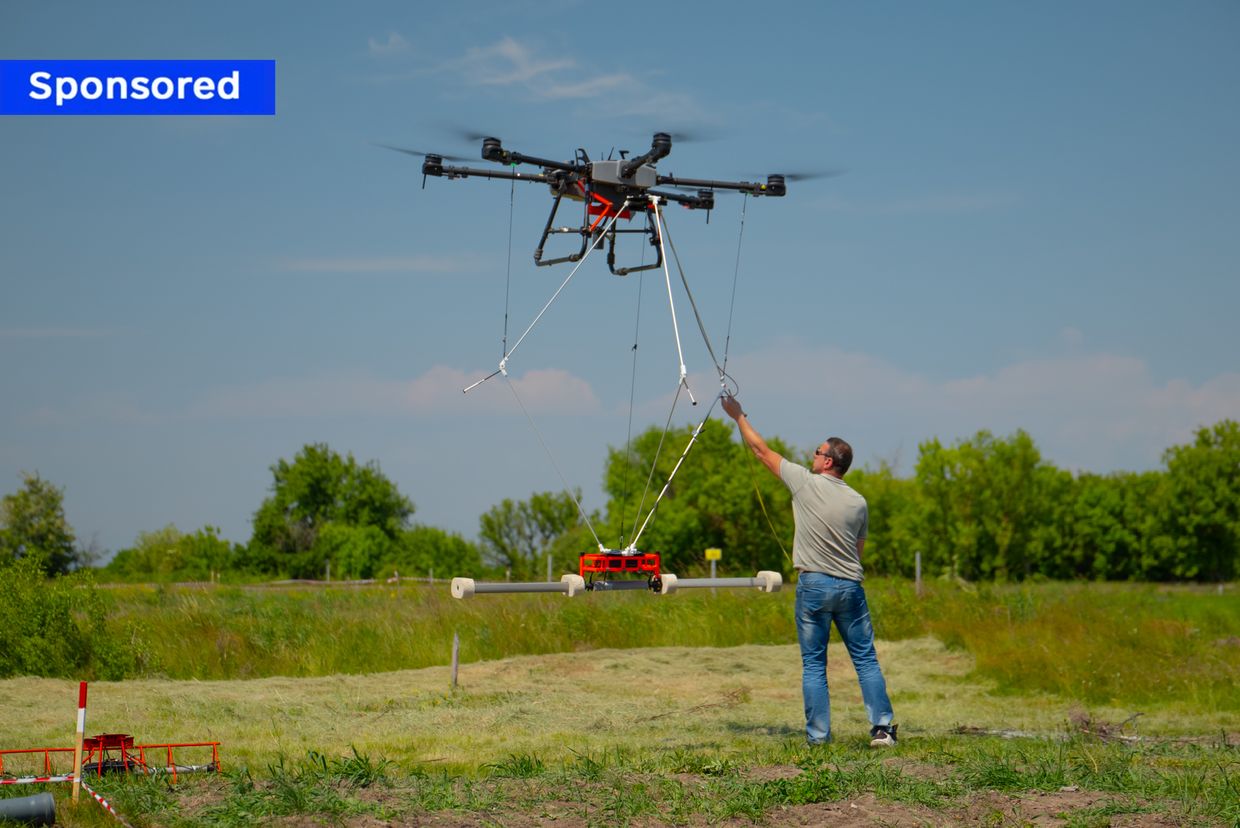
Ukrainian startups cut demining time by centuries with new tech
Editor’s Note: This story was sponsored by the United Nations Development Programme (UNDP) in Ukraine.
When a sapper with the call sign "Boroda" asked his friends, the founders of the Rovertech company, to create something for demining, and provided them with his own sketch, they seized on the idea.
"He made us make something so that he would not risk his life so much. We tortured each other until we finally did it," Borys Drozhak, the co-founder of Rovertech, told the Kyiv Independent.
The company designed the "Zmiy" (Snake) remote demining vehicle. This is just one example of Ukrainian startup industry’s initiatives to foster the country’s mine-clearing efforts.
Russia’s full-scale invasion turned Ukraine into the most mined country in the world, putting at risk the lives of Ukrainian people for generations to come.
According to Economy Minister Yulia Svyrydenko, a total of 174,000 square kilometers (67,000 square miles) of Ukraine’s land have been considered to be potentially contaminated following Russia’s full-scale invasion in 2022. Despite ongoing hostilities, Ukraine has reduced the area considered as potentially hazardous by over 35,000 square kilometers (13,500 square miles).

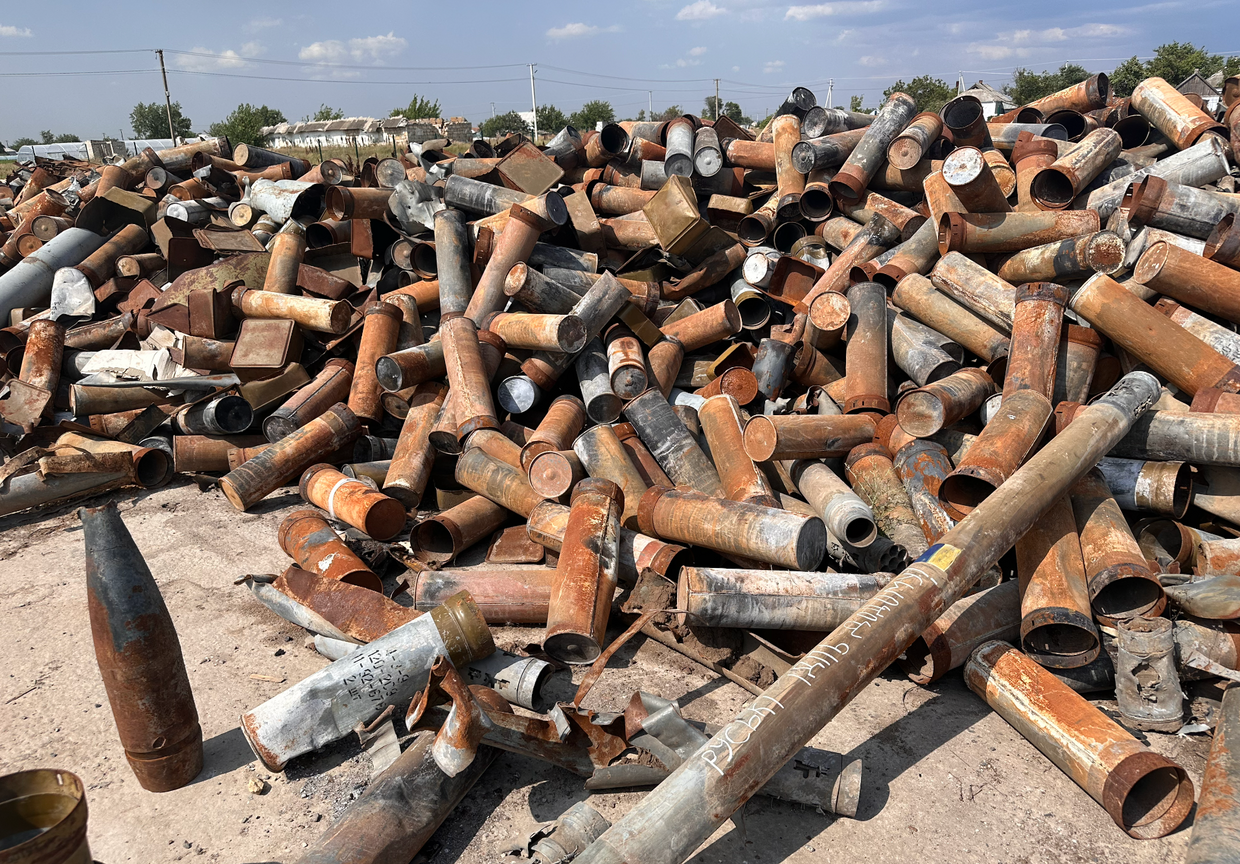
But even after that reduction, Ukraine’s potentially mined areas are estimated to equal 139,000 square kilometers (54,000 square miles), which exceeds the size of Greece, Bulgaria or Austria, and almost exactly equals the size of North Carolina, Prime Minister Denys Shmyhal said.
According to a Globsec report, it might take over 700 years to clear Ukraine using existing resources. But the country’s plans are far more ambitious.
However, Ukrainian officials say they aim to clear 80% of potentially mined land over the next 10 years. Achieving this goal would massively reduce the threat of mines and its impact on the Ukrainian people’s lives. They count on the breakthrough technologies to speed up this process.
"Today, we are witnessing a game-changing shift as innovative technologies, enabled by our support, rapidly accelerate the process and position Ukraine as a global pioneer in mine action innovation," said Jaco Cilliers, UNDP Resident Representative in Ukraine.
UNDP in Ukraine has been at the forefront of transforming Ukraine's mine action sector, working hand-in-hand with the country’s government. A number of countries have allocated funds for Ukraine’s demining under the UNDP Mine Action Programme.
"Each breakthrough by Ukrainian companies is undeniable proof that Ukraine is a nation of trailblazers and changemakers," Cilliers said.
This year, Kyiv launched a humanitarian demining market in which the state covers 100% of the cost of demining agricultural land, Economy Minister Yulia Svyrydenko said.
"We managed to sign agreements with mine action operators to clear more than 14,400 hectares of agricultural land," she added.
In search of mortal danger
Modern approaches in humanitarian demining are aimed at saving time, money and people’s lives.
Vitalii Lopushanskyi, the founder of the UADamage startup, suggests it could take even less than 10 years to map mined areas in Ukraine. That would be possible, he says, if those involved in demining use drones.
To determine the contaminated areas, Lopushankyi’s team equips drones with the special sensors.
Shortly after the beginning of Russia’s full-scale invasion in 2022, Lopushanskyi’s company started digitizing damaged infrastructure and buildings using artificial intelligence and satellite data.
The team’s priorities changed after Lopushanskyi witnessed two civilian cars being blown up by mines in the formerly occupied part of Kherson Oblast.
"I realized that no one can (start) rebuilding without demining. First, we need to make the territories safe," he told the Kyiv Independent.
The startup has developed a technology that uses satellite images and drones to remotely detect explosives. While using aerial sensors in demining isn’t entirely new, the company’s unique technology combines several sensors.
The technology is already being used to map contaminated areas in Ukraine.
When Ukraine’s needs are fully covered, the startup is ready to share this demining technology with other countries. In the long run, UADamage aims to combine it with robots that operate on the ground to clear the mines.
"As a result, it (the technology) will replace humans," Lopushanskyi said.
"it (the technology) will replace humans"
To help map the mined areas, the UADamage teamed up with the Ukrainian Researchers Society. The group, mainly consisting of geographers, also analyzes the territories using satellite images. They use a neural network, a type of AI technology, to analyze the images and define potentially mined areas, Pavlo Ostapenko, head of the Ukrainian Researchers Society, told the Kyiv Independent.
For example, using satellite images, it is possible to tell if fields have been cultivated recently or not – this is a clear first indicator of the potential presence of explosive hazards.
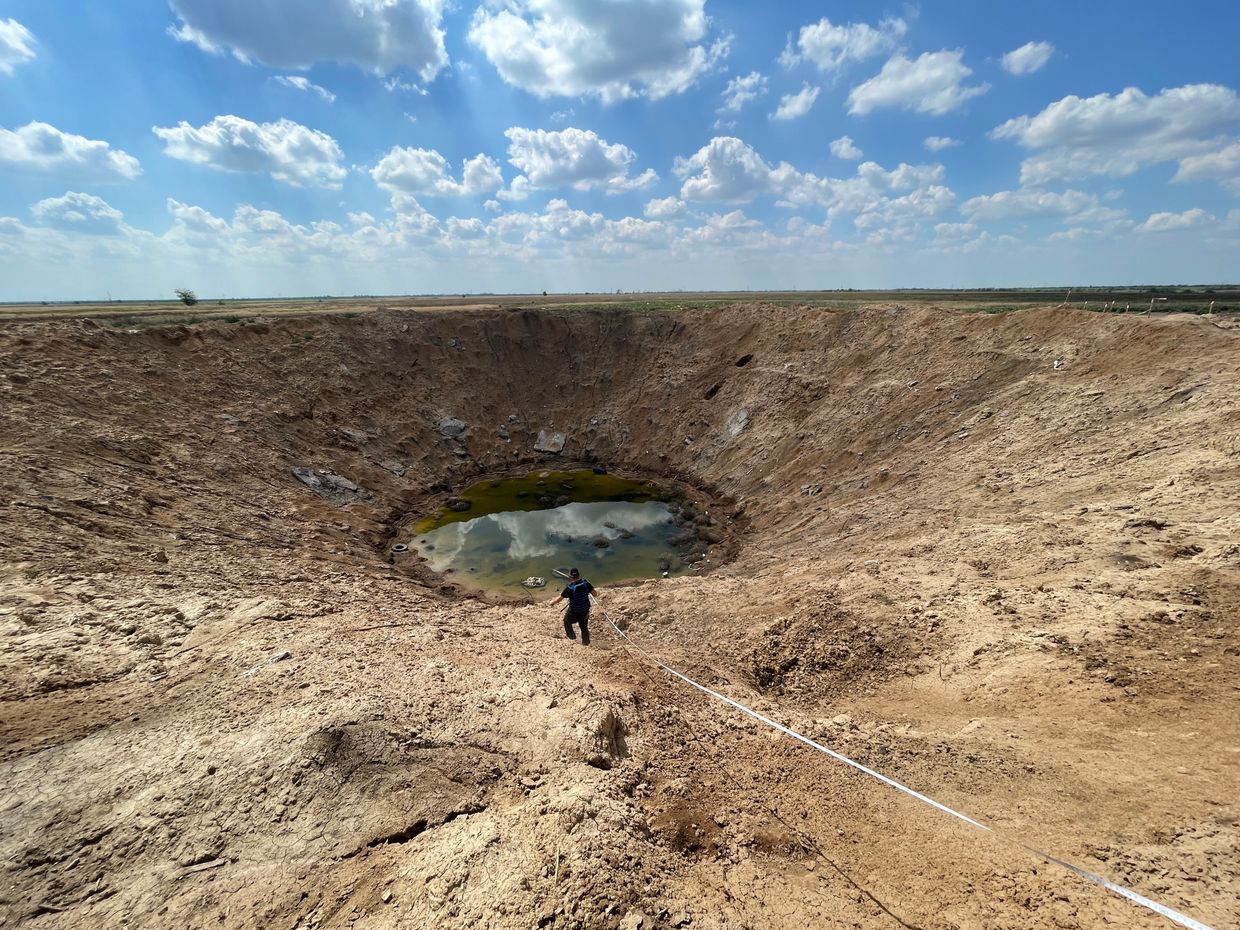
Today, the Ukrainian Researcher Society's priority is to clear Ukraine’s agricultural land of mines. A total of 199 Ukrainian farmers have been killed by mines or explosive devices since the beginning of the all-out war, according to Ukraine’s Defense Ministry.
To speed up the process, an NGO PostUp Foundation developed a drone that collects magnetic and optical data simultaneously, resulting in a multilayered map showing anomalies and visually identified objects. This map can be used by sappers.
The MinesEye project, led by the foundation, equips agronomic drones with a sophisticated sensor that helps to search for mines and explosive ordnance both on the surface and under the soil of a contaminated area, Vlad Kozak, a founder of the PostUp, told the Kyiv Independent. It can detect most explosive objects.
"(This) allows us to significantly reduce the cost of demining itself due to the fact that we can prioritize the territory in question, that is, find areas that are more contaminated and less contaminated," Kozak said.
PostUp will be deploying one of the cutting edge MinesEye systems in support of the demining units of Ukraine’s State Emergency Service (SESU) Units across the first half of 2025, in a project supported by UNDP. Following on from testing conducted on such systems by UNDP in August 2024, the MinesEye system will be put to work by SESU teams, supported by Kozak and his colleagues, in some of Ukraine’s most heavily mine-affected areas.
Robots saving lives
Created by Rovertech startup, the "Zmiy" ground drone became the first remote demining vehicle that was developed and certified in Ukraine.
"The sappers told us that they need us since they do not see any other way. Other demining machines are just an unrealistic story. It takes them (sappers) a long time to clear everything by hand," said Drozhak, the co-founder of Rovertech.
Although it weighs nearly a ton, the "Zmiy" is considered a lightweight vehicle. It means it can be faster and can handle larger areas, compared to other demining machines.
Once launched, the vehicle moves around the area, hitting the land to activate the mines. The vehicle can withstand explosions of anti-personnel and anti-tank mines.
The key advantage of the machine over its foreign-made counterparts is its cost. While average demining machines cost up to a million euros, the "Zmiy" has an estimated price tag of around $20,000, according to the Rovertech co-founder.
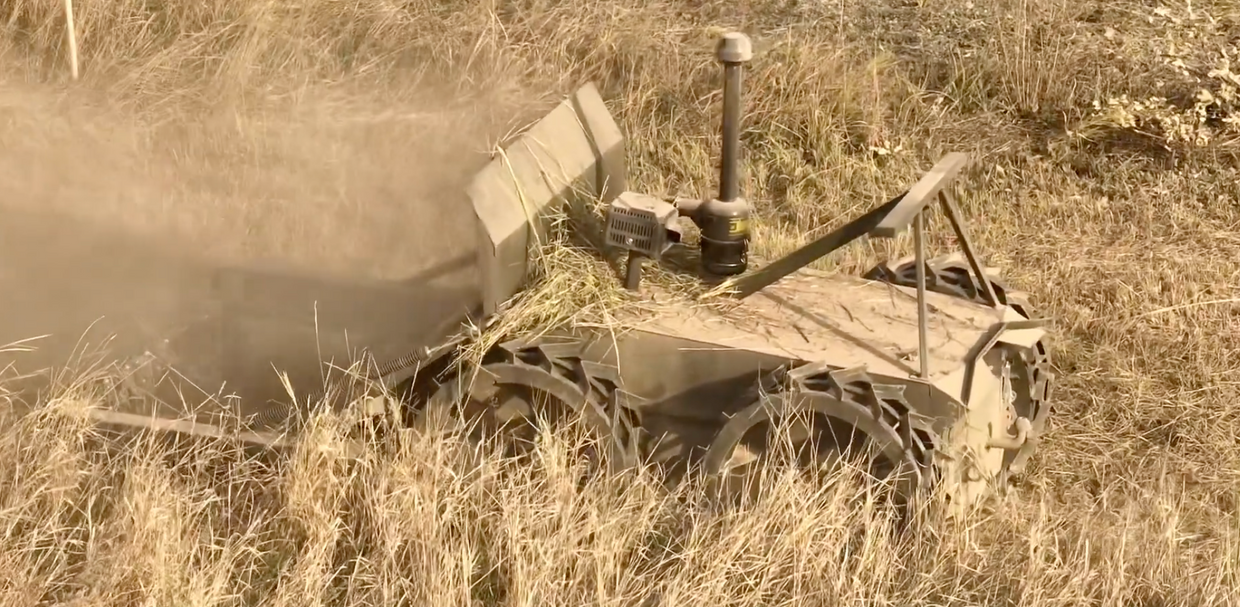
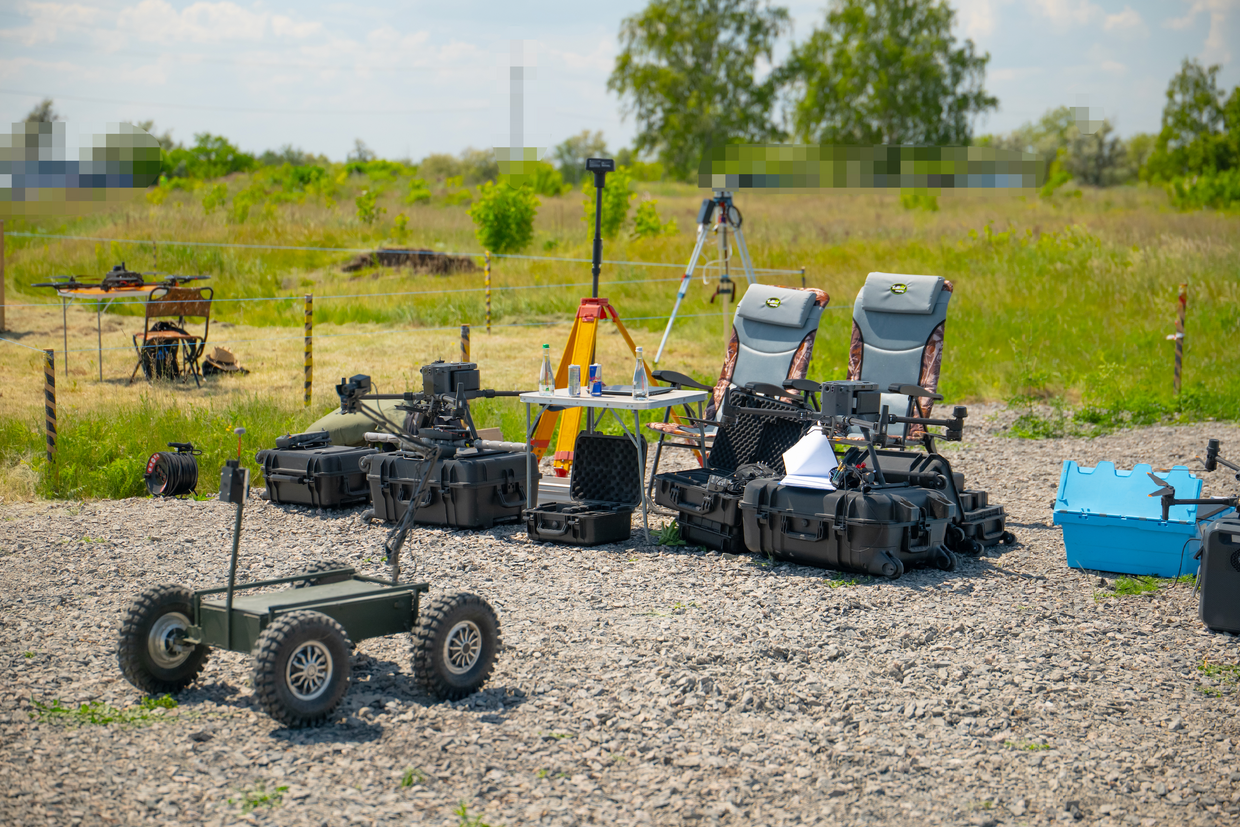
The company currently produces up to 40 machines per month but plans to double the production in the near future. In Drozhak’s estimation, about 700 such vehicles are needed for humanitarian demining of all Ukraine areas that are considered mined.
Before the "Zmiy" became a tool for humanitarian mine action, it was initially devoted to military demining needs.
Rovertech has also created the "Zmiy-500," a larger armored vehicle, based on its original deminer, that can be used to transport weapons and people in difficult battlefield conditions, including through the mined areas. Several Ukrainian brigades are already equipped with such vehicles, according to the startup.
"Each journey of these robots means that two to five people do not need to risk their lives (driving a vehicle) under FPV drones," Drozhak said. "We have robots replacing people, and that's why our people survive."
